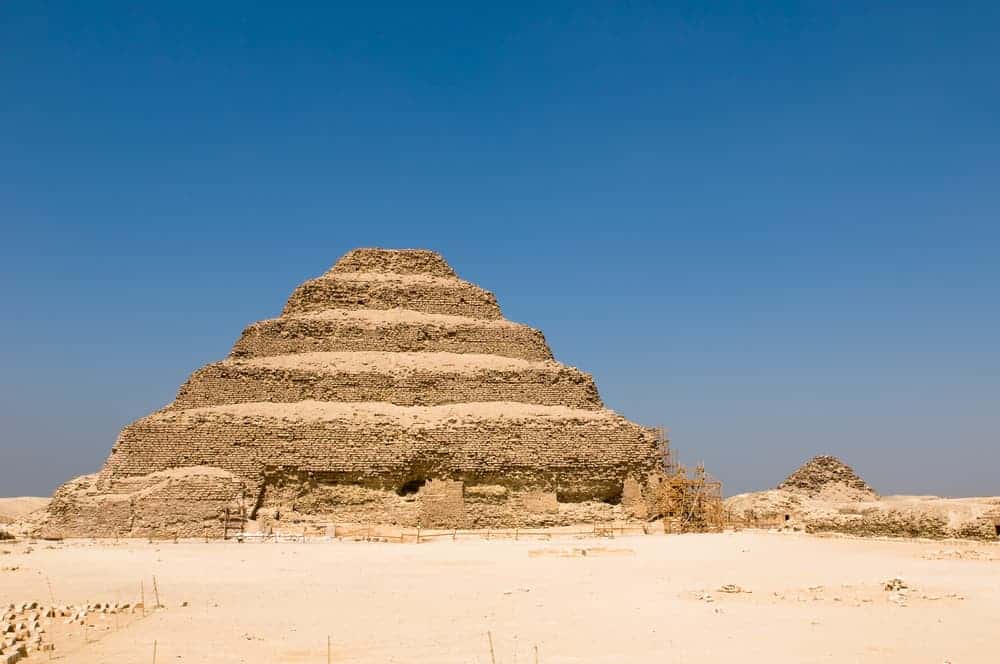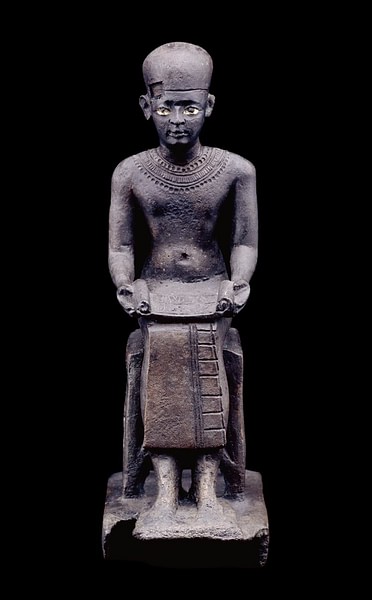
The First Architect In History – The Fascinating Story Of Imhotep

Who was Imhotep?
Imhotep (2667 – 2600 BCE) whose name means “the one who comes in peace”. Was an Egyptian polymath best known as the architect of King Djoser’s step pyramid. Imhotep was a commoner by birth who advanced to the position of one of the most important and influential men in Egypt through his natural talents.
He was chancellor to the pharaoh Djoser, high priest of the sun god Ra, and a vizier. As well as a poet, physician, mathematician, astronomer, and architect. In time he also became the god of wisdom and medicine. Some sources also say he was the god of science and architecture.
Djoser step pyramid (2670 – 2650) –
Under King Djoser’s reign (c. 2670 BCE) Imhotep was vizier and chief architect. He was the probable architect of Djoser’s step pyramid.
When Imhotep began building the step pyramid, he changed the traditional shape of the King’s mastaba from a rectangular base to a square base. The reason why Imhotep decided to change the shape is unknown. But many think he wanted to have a square base from the start.
The masonry was laid not vertically but inclined toward the middle of the pyramid to increase the structural stability. Limestone bricks were used to build the pyramid.
Imhotep decorated the pyramid with inscriptions and engravings of reeds.
When the pyramid was completed it stood 204 feet high. It was the tallest structure of its time. It was also the first pyramid built in Egypt.
Djoser was so impressed with the pyramid he disregarded the ancient pattern that only the king’s name may appear on monuments. Djoser then had Imhotep’s name inscribed on it well.
When Djoser died he was placed in the burial chamber beneath the step pyramid. And Imhotep went on the serve his successors.

Imhotep’s other architectural projects –
Imhotep then went on to design and build another step pyramid. Pharaoh Sekhemkhet asked Imhotep to construct another pyramid. He planned it to be greater than Djoser’s. The pyramid was never completed because the pharaoh died during the 6th year of his reign.
After Imhotep’s death –
About 3,000 years after his death, he was gradually glorified and defied. Imhotep is among the few non-royal Egyptians who were deified after their deaths. Traditions from long after his death treated him as a great author of wisdom texts, and especially a physician. Soon after he was worshiped as a demi-god.
2,000 years after his death, Imhotep’s status had risen to that of a god of medicine and healing.
Imhotep’s tomb has never been found and It is suspected his tomb is in north Saqqara. Where most well-known tombs of the period are located.





